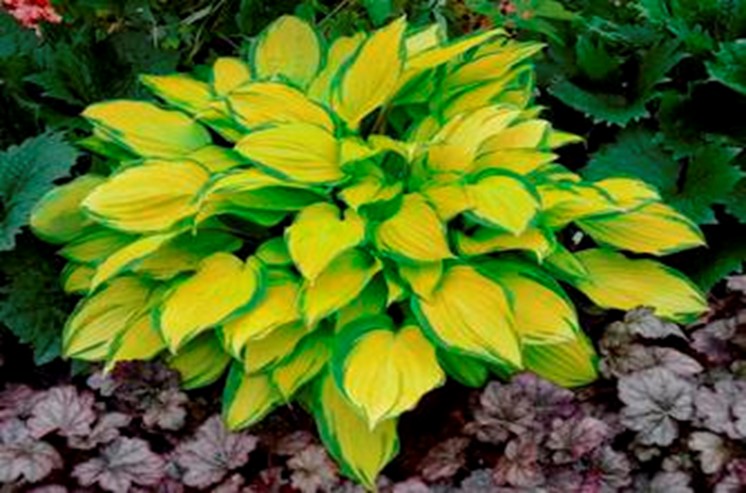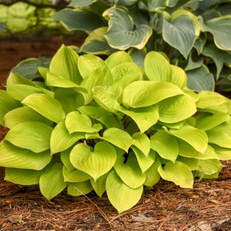|
Each year, since 1996, the American Hosta Growers Association members select one cultivar as an award winner, based in part on its ability to grow well in all regions of the country, be widely available in sufficient supply, and retail for about $15 in the year of its selection. The 2022 Hosta of the Year is “Island Breeze”, created by Walters Gardens Inc., Michigan. First came ‘Fire Island’ (shown below) which was followed by its variegated progeny ‘Paradise Island’. Now there is ‘Island Breeze’ which is the third member of this “tropical” family and a sport of ‘Paradise Island’. The improvements in this cultivar include more impressive variegation due to its wider margins, thicker leaf substance, and a strong growth rate. In early spring, wide, dark green margins stand in sharp contrast to the bright yellow centers. As summer approaches, the centers become more chartreuse when plants are grown in heavier shade or lighter yellow if they are grown in more sun. Like ‘Paradise Island’, this one also has showy red speckled petioles that bleed up into the leaves. Dark lavender flowers appear on tall reddish greenscapes in midsummer. A plus in the garden, their large leaves provide excellent coverage for dying bulb foliage.
Credit to http://www.hostagrowers.org/Hosta_of_the_Year.html
Contributed by: Vicki Gee-Treft, Master Gardener Volunteer
0 Comments
Leave a Reply. |
|
| North Country MGV | gARDEN bLOGS |
Location |
|


 RSS Feed
RSS Feed